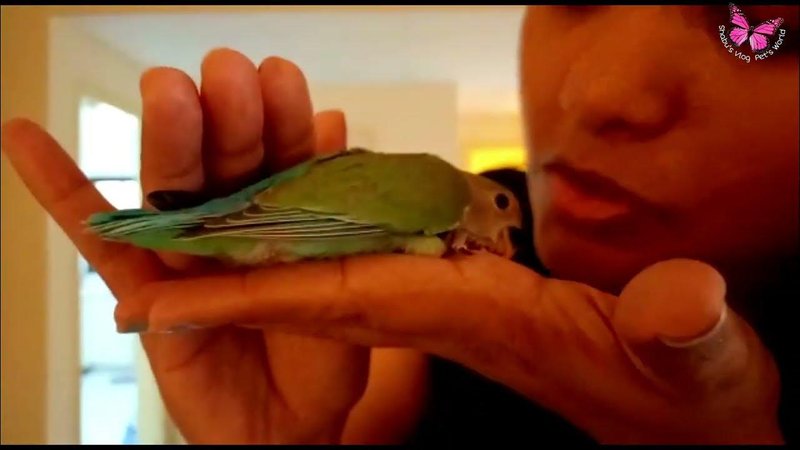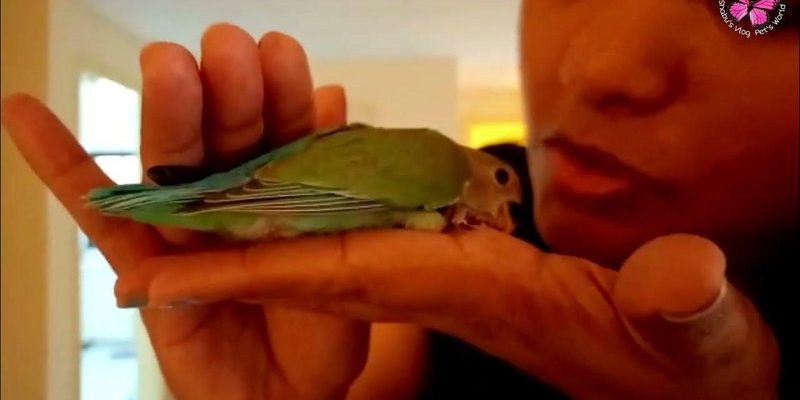
Think of training as building a bridge between you and your lovebird. Instead of reaching for treats or rewards every time they do something right, imagine allowing them to step up onto your finger as their way of saying, “Hey, I trust you.” This bond makes training much easier and, honestly, quite enjoyable. So, grab a few tasty treats and let’s dive into the delightful world of lovebird training!
Understanding Your Lovebird’s Behavior
Before you dive into training, it’s essential to understand your lovebird’s natural behaviors. Lovebirds are curious, social creatures, and they thrive on interaction. They often communicate through their body language. For example, if your lovebird puffs up or tilts its head, it might be feeling curious or playful.
It’s important to note that each lovebird has its own personality. Some are more adventurous and eager to explore, while others may be a bit shy. Spend some time observing your lovebird’s behavior. Are they more comfortable in their cage, or do they enjoy hanging out on your shoulder? Understanding these basics will help you tailor your training approach.
Additionally, you might be wondering how long it will take to train your lovebird. The truth is, this varies from bird to bird. Some might catch on quickly, while others take a bit more time. Patience is crucial, and it’s perfectly natural for the training process to have its ups and downs.
Gather Your Supplies
To successfully train your lovebird to step up and come to you, you’ll need a few essential supplies. Here’s a quick checklist:
- Treats: Small, healthy treats like millet or sunflower seeds make fantastic rewards.
- Perch or Training Stick: A soft perch or stick can help your lovebird feel secure when stepping up.
- Quiet Space: Find a calm environment free from distractions—this helps your lovebird focus.
- Patience and Consistency: These are your most vital tools in training!
Having the right supplies on hand makes your training sessions much smoother. Think of it like preparing for a trip; if you pack everything you need, the journey is more enjoyable.
Creating a Positive Training Environment
A relaxed atmosphere is key when it comes to training your lovebird. Just like how you’d feel more focused in a quiet café rather than a bustling restaurant, your lovebird will perform better in a calm space. Choose a spot in your home where you both can feel at ease.
Start by reducing distractions. Close windows, turn off the television, and let other pets know that it’s training time. This is similar to how you might quiet down a room before giving a presentation.
Next, keep your training sessions short but sweet. A good rule of thumb is to aim for about 5 to 10 minutes per session. This not only maintains your lovebird’s interest but also prevents them from becoming overwhelmed. If they seem tired or disinterested, it’s best to end on a positive note and try again later.
Teaching the Step-Up Command
Now that you have everything ready, it’s time to teach your lovebird the step-up command. Here’s how to do it in just a few steps:
1. Get Your Bird Comfortable: Start by letting your lovebird hang out on their perch or the side of their cage. Encourage them to relax and feel safe.
2. Use Your Finger or Perch: Slowly move your finger or a training perch towards them. Be gentle; abrupt movements can startle them.
3. Say “Step Up”: When they show interest in your finger or perch, clearly say, “Step up.” Use a friendly tone to create a positive association.
4. Reward Immediately: If they take a step toward you, even if it’s just a small movement, reward them right away with a treat. This reinforces their action.
5. Repeat and Be Patient: Keep practicing this routine. If they don’t step up, it’s okay! Just give them time and try again later.
Like learning a dance, practice makes perfect. Eventually, your lovebird will associate the command with the action.
Encouraging the Come to You Command
Once your lovebird is comfortable stepping up, it’s time to teach them to come to you. This step usually follows closely behind the first command:
1. Call Your Lovebird: Stand a short distance from their perch. With a gentle voice, call their name or say, “Come here.”
2. Use Treats as Lure: Hold a treat in your hand to encourage them to come closer. It’s like waving a friend over to join a party.
3. Reward Movement: When they make any effort to come towards you, reward them promptly. This might mean they fluffed up their feathers or hopped in your direction—celebrate that progress!
4. Gradually Increase Distance: As they get the hang of it, slowly increase the distance you stand from them. Each time they successfully come to you, reinforce with praise and treats.
The key is to make them feel excited about coming to you. With each successful attempt, they’ll begin to understand that approaching you leads to good things.
Common Challenges and Solutions
Training isn’t always smooth sailing. You might encounter a few bumps along the way. Here are some common challenges and how to tackle them:
– Fear or Hesitation: If your lovebird seems frightened or hesitant, it’s crucial to slow down. Give them space, and don’t rush the process. Sometimes, just spending time near them without training can build their trust.
– Distractions: If they get easily distracted, try a quieter environment or reduce outside noise. Familiar toys nearby can help too; sometimes, they just need a little comfort.
– Inconsistency: Consistency is key to training success. Try to practice at the same time daily, establishing a routine. Consistency builds familiarity, which can enhance their learning.
Every bird is different, and you’ll learn more about your lovebird’s unique quirks as you go.
Celebrating Progress and Building Trust
Every small success is worth celebrating! Whether your lovebird steps up once or comes to you on command, each victory strengthens your bond. You might find yourself chatting to them as though they’re your best friend.
Over time, as they become more comfortable, they may even start to seek out your company. This is not just a training milestone; it’s a significant relationship moment. Keep in mind that lovebirds thrive on social interaction. The more trust you build, the more they’ll want to engage with you.
So, take a moment and appreciate how far you and your lovebird have come. A simple “good job” or a gentle scratch on their head after a training session can reinforce their learning and make it feel rewarding for both of you.
Training your lovebird to step up and come to you is a rewarding journey filled with connection and understanding. By creating a positive environment, using patience, and rewarding their efforts, you’ll build a strong bond that allows your lovebird to thrive. Remember, each bird is unique, and your training approach might differ.
As you engage with your lovebird, you’ll not only teach them commands but also enjoy the process of mutual learning and companionship. So take a deep breath, grab those treats, and enjoy every moment of this delightful experience. Happy training!

